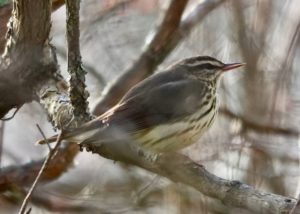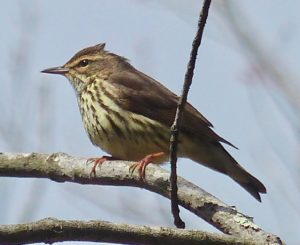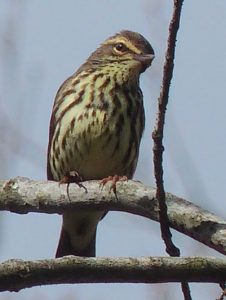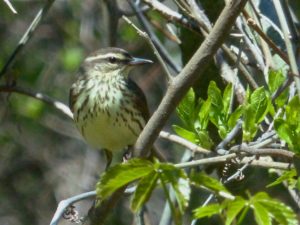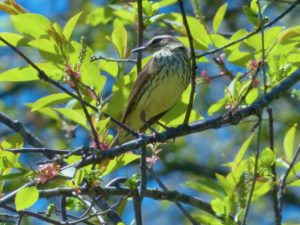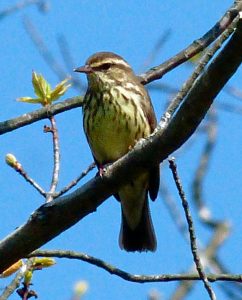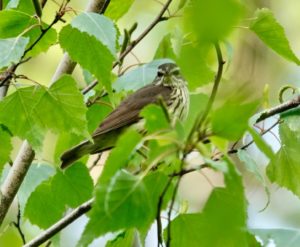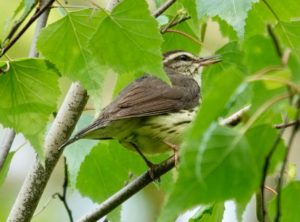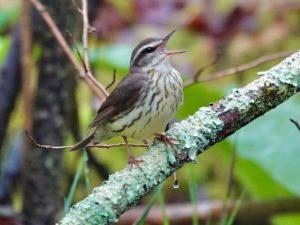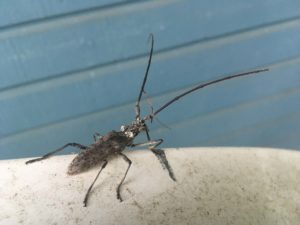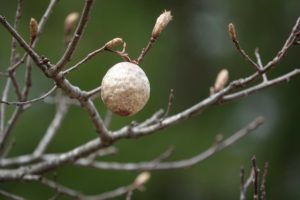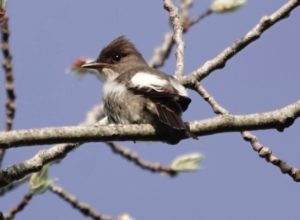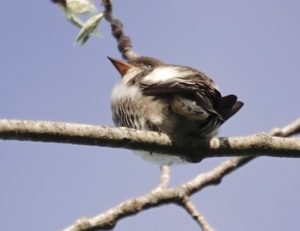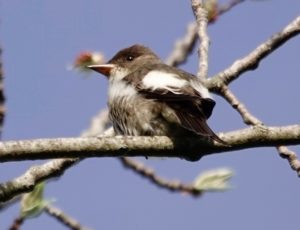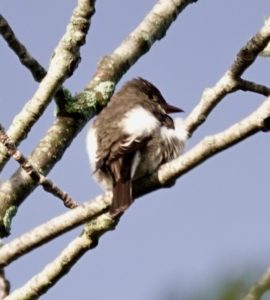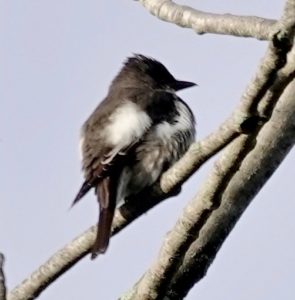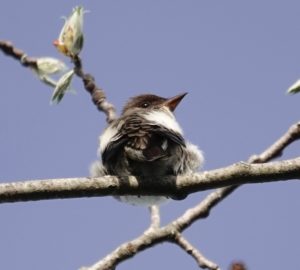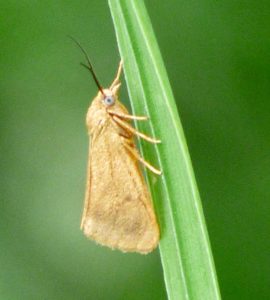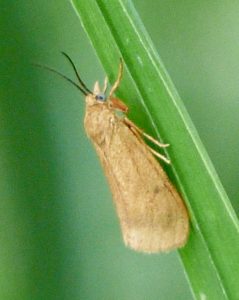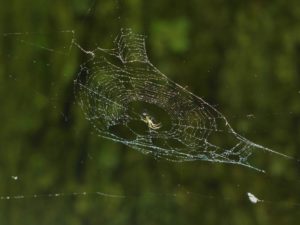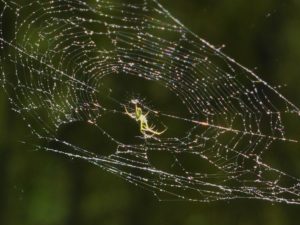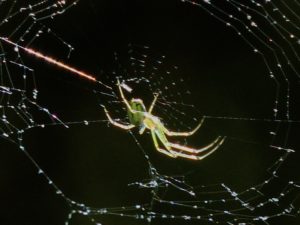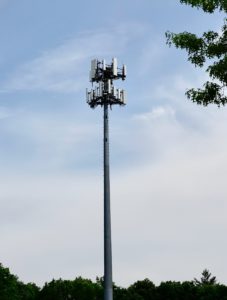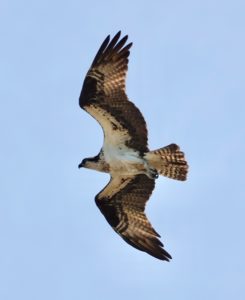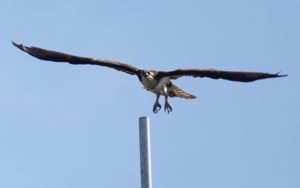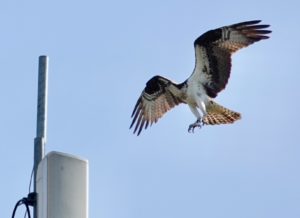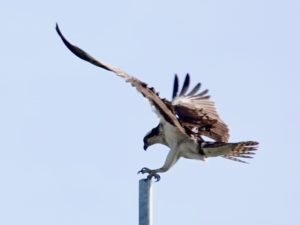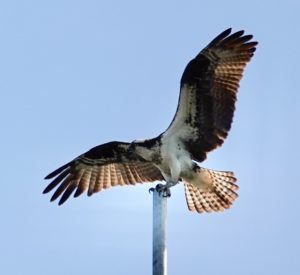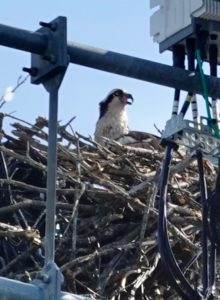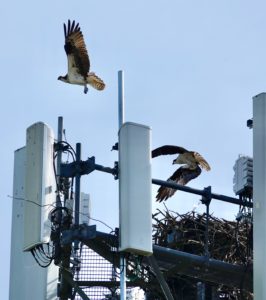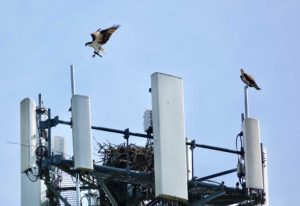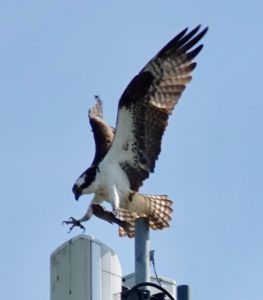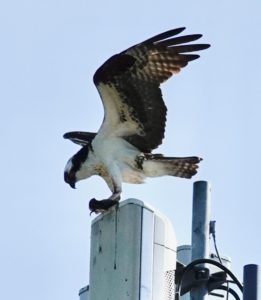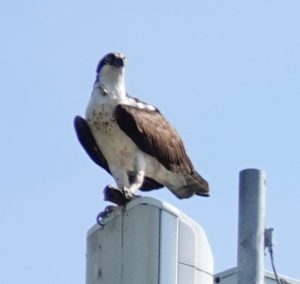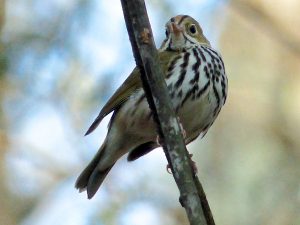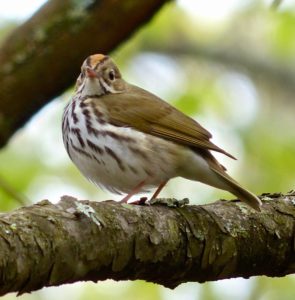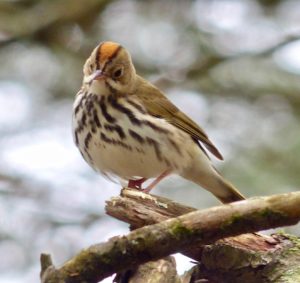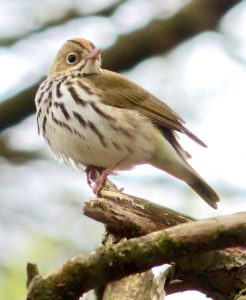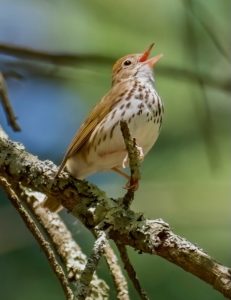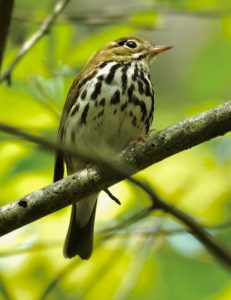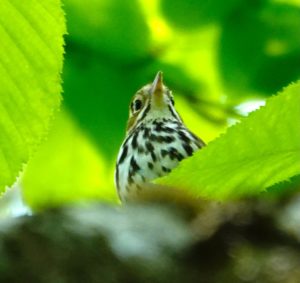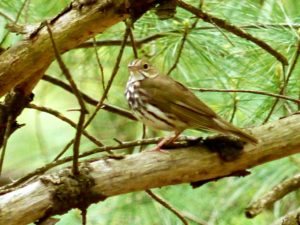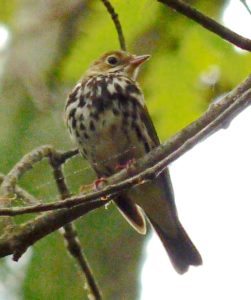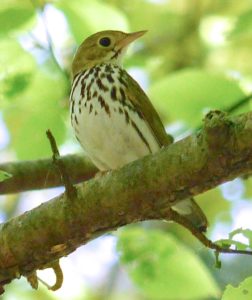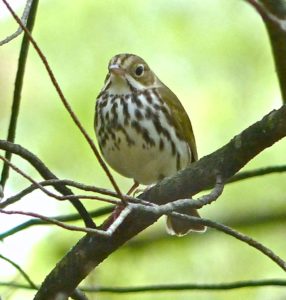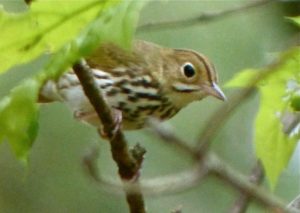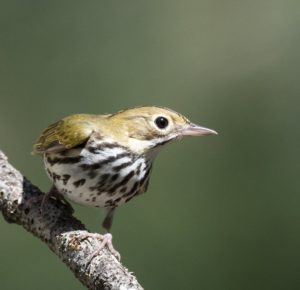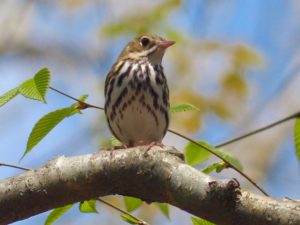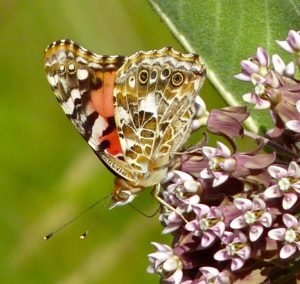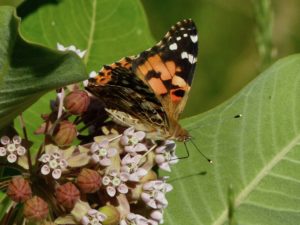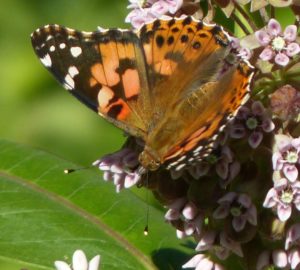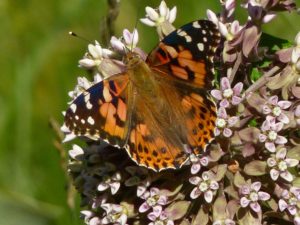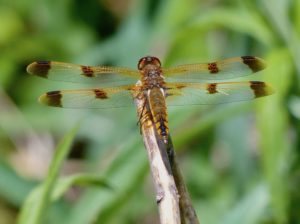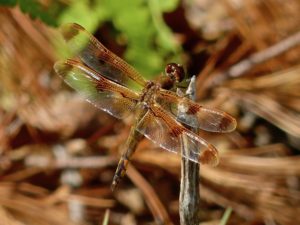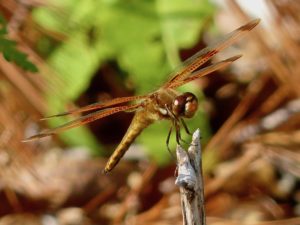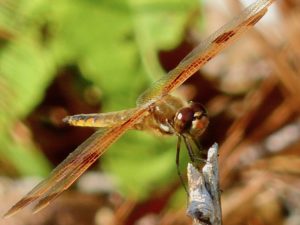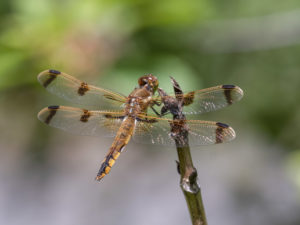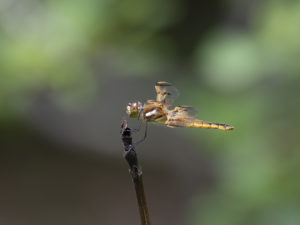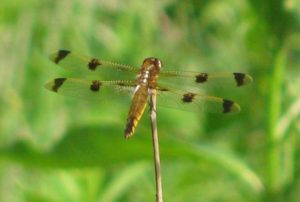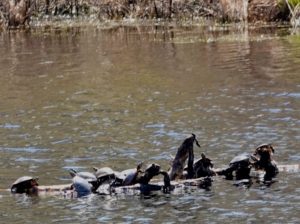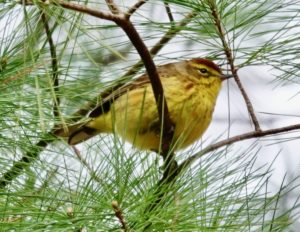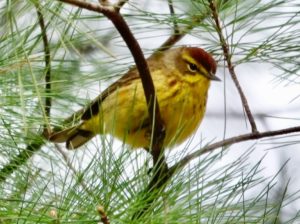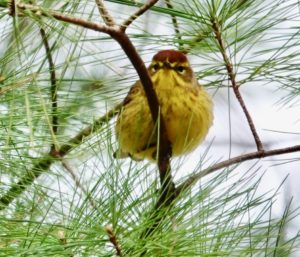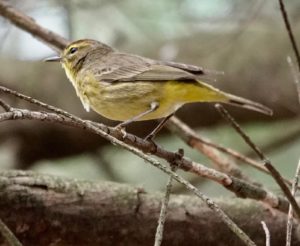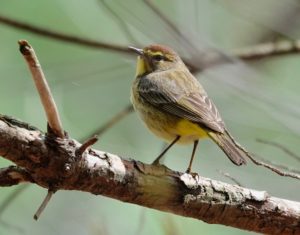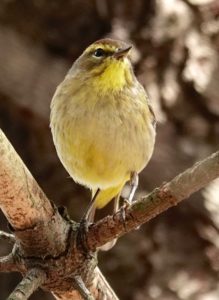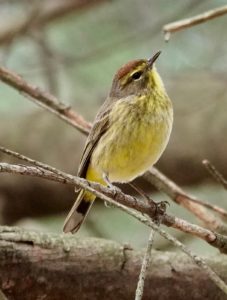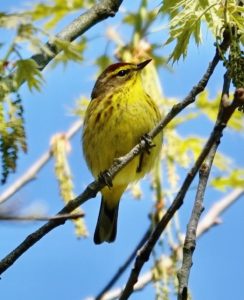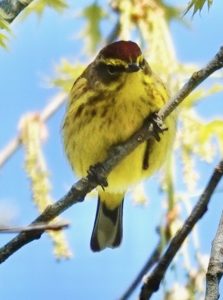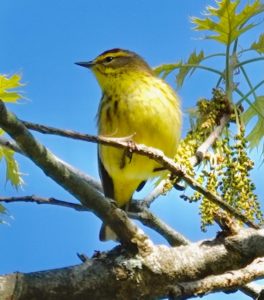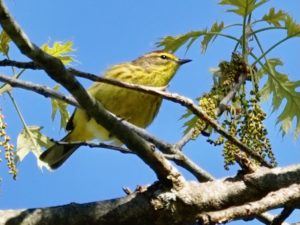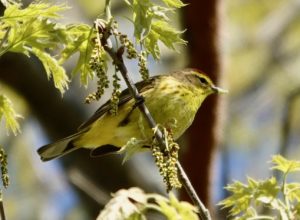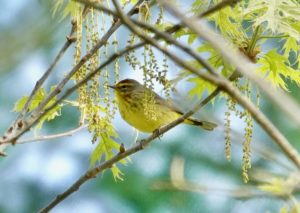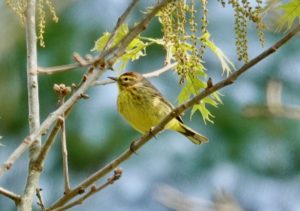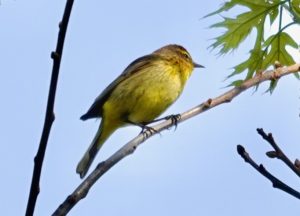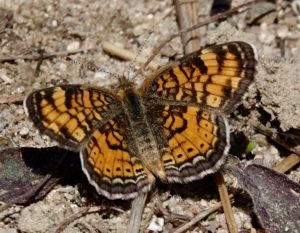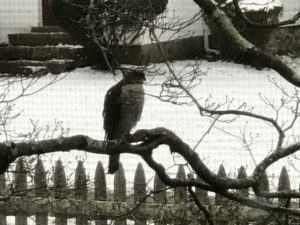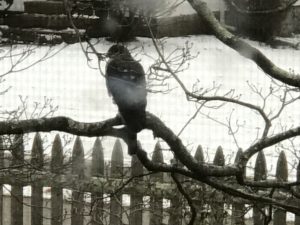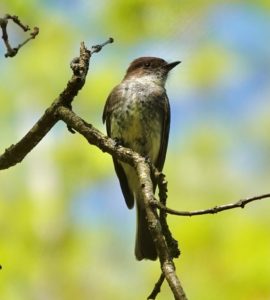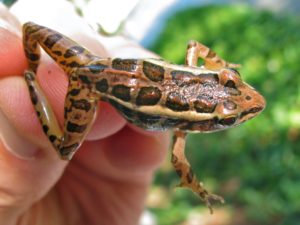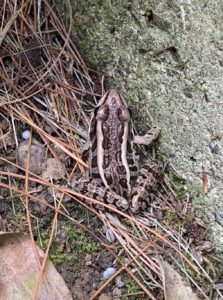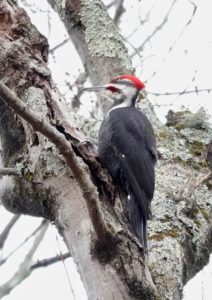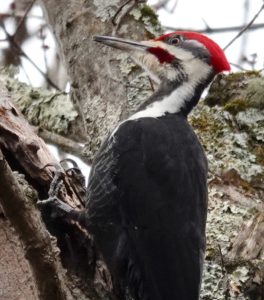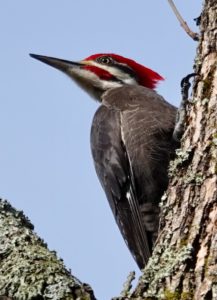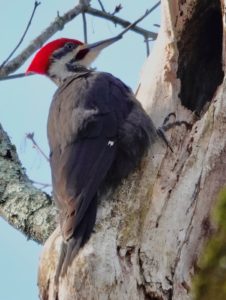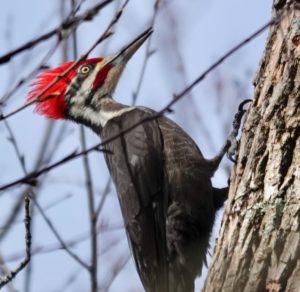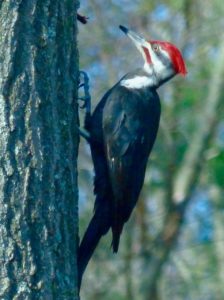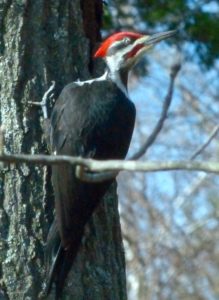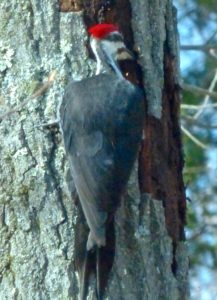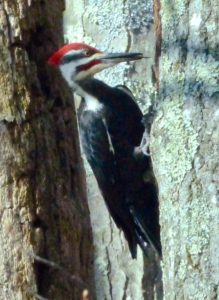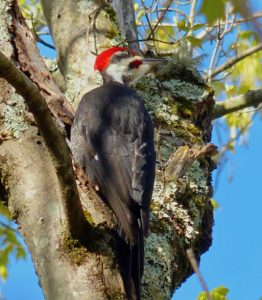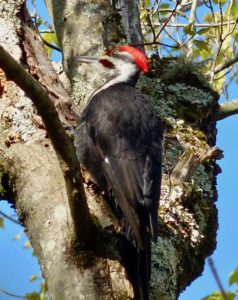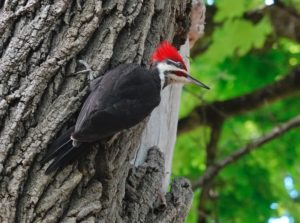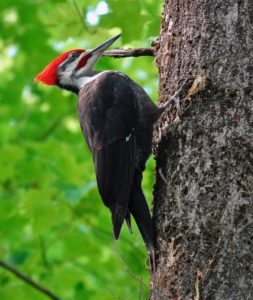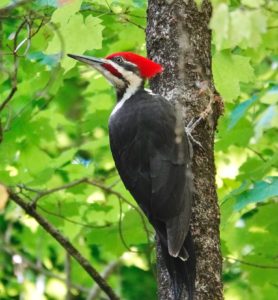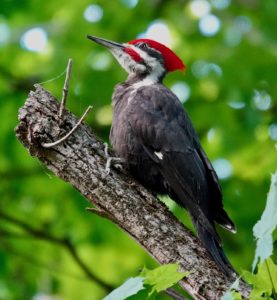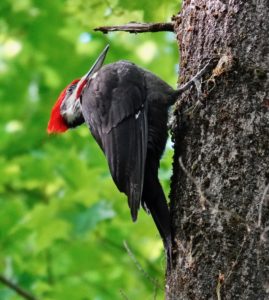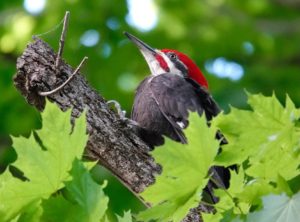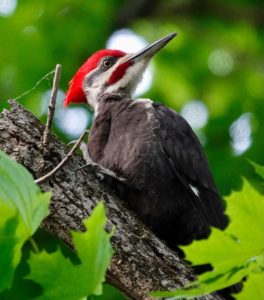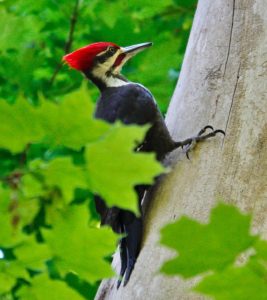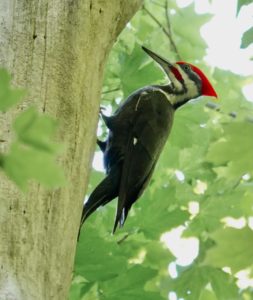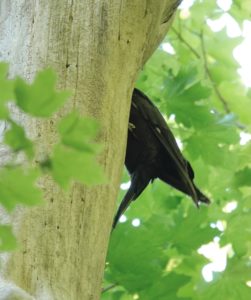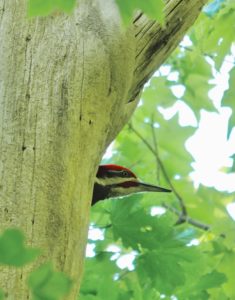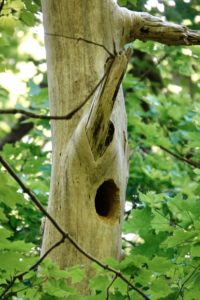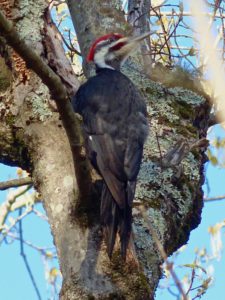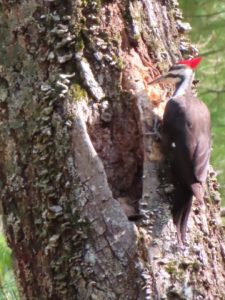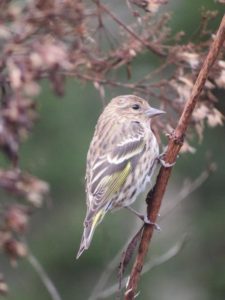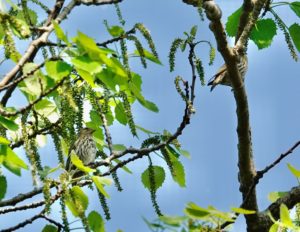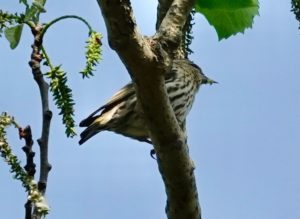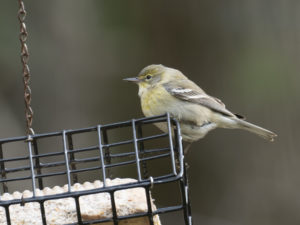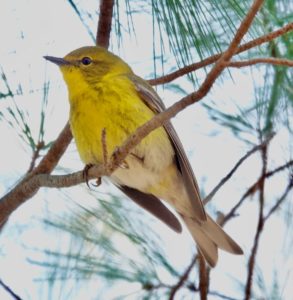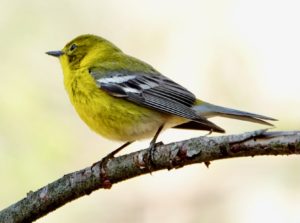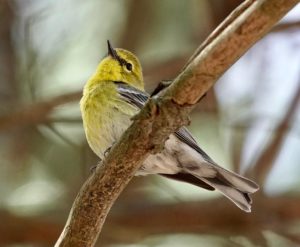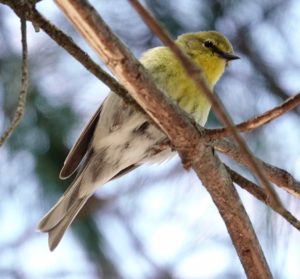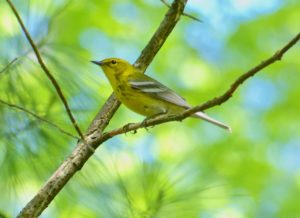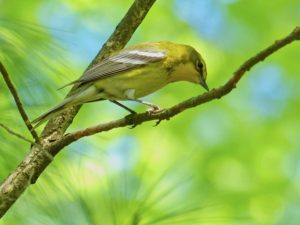Sightings – Animals
Observer: Paul Lauenstein
Observation Date: 6/12/13
Observation Time: 1:30 p.m.
Observation Location: Gavins Pond Dam
Common Name: Northern Water Snake
Scientific Name: Nerodia sipedon
Comments: The older northern water snakes get, the blacker they become. This mature specimen appears to be all black, but the underside is still colorful. Non-venomous northern water snakes are sometimes confused with venomous water moccasins, which live farther south. Even older northern water snakes that look black when on shore may appear banded when swimming through the water.
Note the ridges on the scales, called “keels.”
More information on this one-minute video: https://www.youtube.com/watch?v=Uw6W8NaJmfo
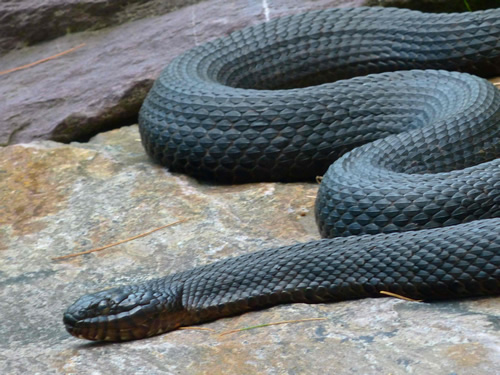
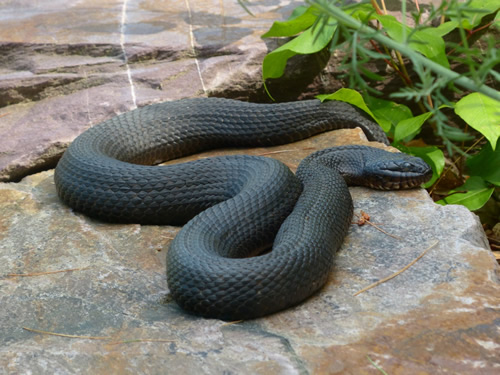
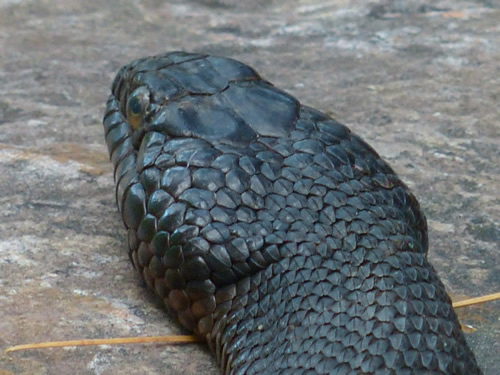
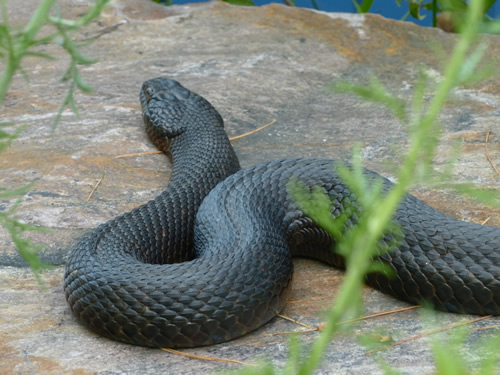
Observer: Paul Lauenstein
Observation Date: 7/9/11
Observation Time: 3:45 p.m.
Observation Location: Gavins Pond Dam
Common Name: Northern Water Snake
Scientific Name: Nerodia sipedon
Comments: Water snakes are not venomous, but they can be large (4 feet long or more, and as thick as a man’s wrist) and aggressive. This one was more interested in avoiding me than attacking me.
More Information: Savannah River Ecology Laboratory
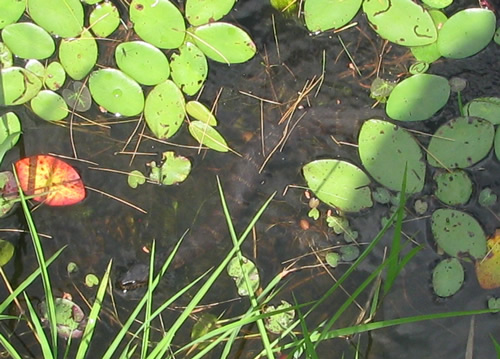
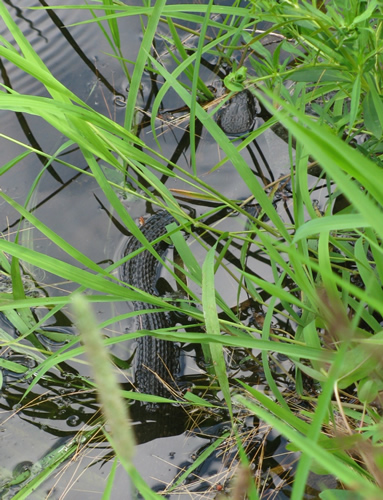
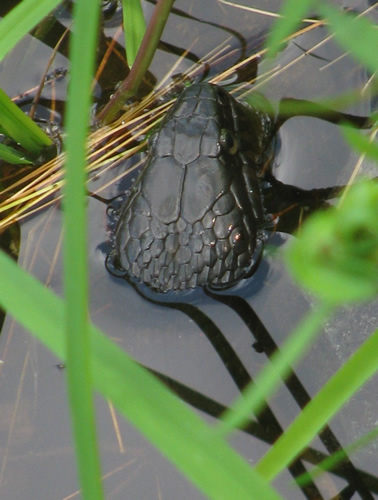
The scales have ridges called “keels.”
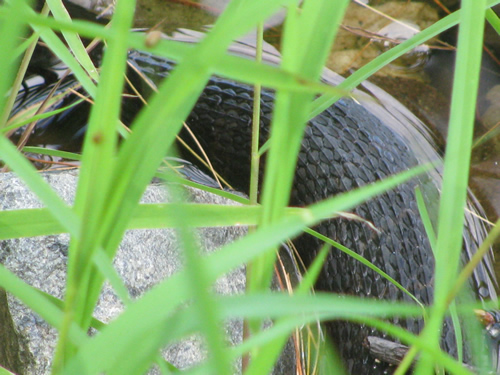
Observer: Alex Hackman
Observation Date: 8/14/10
Observation Time: 11:00 a.m.
Observation Location: Outlet of Gavins Pond
Common Name: Northern Water Snake
Scientific Name: Nerodia sipedon
Comments: Lucky to see this water snake slither by while taking stream flow measurements.
More Information: Wikipedia
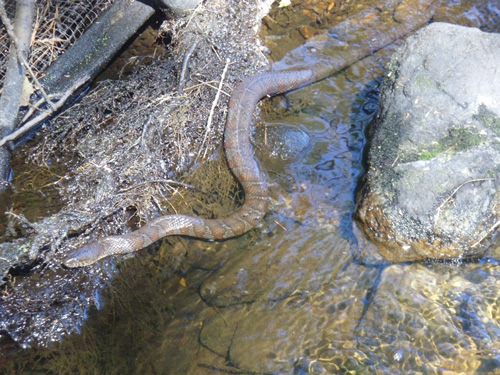
Observer: Paul Lauenstein
Observation Date: 8/6/12
Observation Time: 1:10 p.m.
Observation Location: outflow pool below Gavins Pond Dam
Common Name: Northern Water Snake (juvenile)
Scientific Name: Nerodia sipedon
Comments: Young northern water snake males are more brightly marked than older ones, which tend to be all black.
More Information: Snakes of Massachusetts
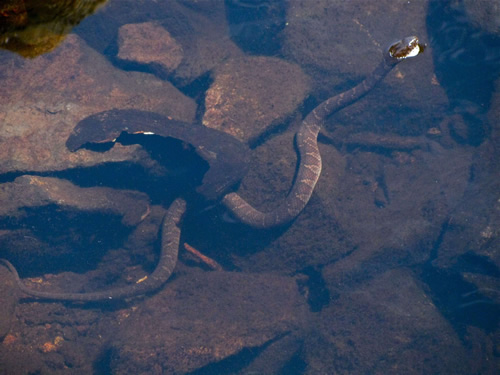
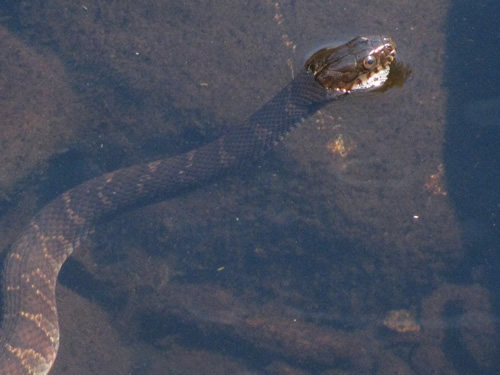
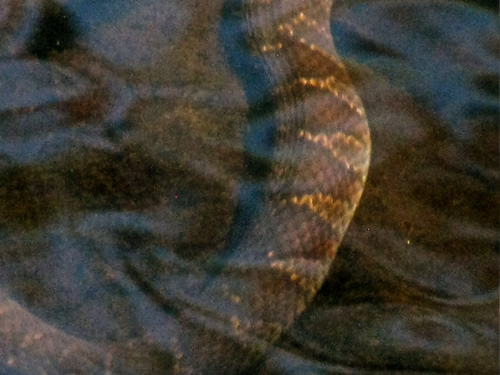
Observer: Paul Lauenstein
Observation Date: 4/23/24
Observation Time: 7:45 a.m.
Observation Location: Moose Hill Audubon Wildlife Sanctuary
Common Name: Northern Waterthrush
Scientific Name: Parkesia noveboracensis
Comments: The northern waterthrush is actually a type of warbler. It looks a lot like an ovenbird, which is also a type of warbler. This one was seen along the boardwalk through the wetlands at Moose Hill.
More Information: All About Birds
Observer: Paul Lauenstein
Observation Date: 5/1/18
Observation Time: 10:00 a.m.
Observation Location: Moose Hill Audubon Wildlife Sanctuary
Common Name: Northern Waterthrush
Scientific Name: Parkesia noveboracensis
Comments: The northern waterthrush is actually a type of warbler. It looks a lot like an ovenbird, which is also a warbler. This one was seen near the boardwalk through the wetlands at Moose Hill.
More Information: All About Birds
Observer: Paul Lauenstein
Observation Date: 5/11/18
Observation Time: 12:50
Observation Location: meadow at Morse and Lakeview
Common Name: Northern Waterthrush
Scientific Name: Parkesia noveboracensis
Comments: The northern waterthrush is actually a type of warbler. It looks a lot like an ovenbird, which is also a warbler. This one was seen in the town-owned meadow at the junction of Morse and Lakeview Streets.
More Information: All About Birds
Observer: Paul Lauenstein
Observation Date: 5/12/16
Observation Time: 9:50 a.m.
Observation Location: Moose Hill Audubon Wildlife Center
Common Name: Northern Waterthrush
Scientific Name: Parkesia noveboracensis
Comments: A bird of northern forests, the Northern Waterthrush is in the warbler family. It sings its loud, ringing song from wooded swamps, bogs and streams. It migrates through Sharon in spring and fall, bobbing its tail in the woods near water.
More Information: All About Birds
Observer: Paul Lauenstein
Observation Date: 5/23/23
Observation Time: 8:00 a.m.
Observation Location: Moose Hill Audubon Wildlife Sanctuary
Common Name: Northern Waterthrush
Scientific Name: Parkesia noveboracensis
Comments: The northern waterthrush is actually a type of warbler. It looks a lot like an ovenbird, which is also a warbler. This one was seen along the boardwalk through the wetlands at Moose Hill.
More Information: All About Birds
Observer: Paul Lauenstein
Observation Date: 5/5/23
Observation Time: 7:25 a.m.
Observation Location: Moose Hill Audubon Wildlife Sanctuary
Common Name: Northern Waterthrush
Scientific Name: Parkesia noveboracensis
Comments: The northern waterthrush is actually a type of warbler. It looks a lot like an ovenbird, which is also a warbler. This one was seen along the boardwalk through the wetlands at Moose Hill.
More Information: All About Birds
Observer: Paul Lauenstein
Observation Date: 9/10/19
Observation Time: 6:20 p.m.
Observation Location: Gavins Pond Road
Common Name: Northeastern Sawyer Beetle
Scientific Name: Monochamus notatus
Comments: The Northeastern Pine Sawyer Beetle is one of several harmless native species that look like the exotic and destructive Asian Longhorned Beetle (ALB).
The Northeastern Sawyer is our largest native longhorn beetle, about as large as ALB, but different in color and pattern: it can be distinguished from ALB by its dull grey color and lack of pattern on its wing covers (the antennae may appear banded, but they won’t be as vivid as they are on ALB). Additionally, while adult ALB will be found on living hardwood trees, the Northeastern Sawyer targets dead or dying conifers. Both adult and larval Northeastern Sawyers prefer to eat the rotting wood of conifers such as pine, spruce, and fir, versus the live, fresh hardwood required by ALB.
Adult Northeastern Sawyer Beetles are active from May through September, while Asian Longhorned Beetles are still active through the first hard frost.
Any sightings of suspicious beetle or tree damage can be reported here. Be sure to get a picture or collect the specimen.
More Information: Massachusetts Introduced Pests
Observer: Paul Lauenstein
Observation Date: 6/1/14
Observation Time: 12:10 p.m.
Observation Location: 4 Gavins Pond Rd.
Common Name: Nursery web spider
Scientific Name: Pisaurina mira
Comments: This large spider was on a tree trunk in my back yard.
More Information: Kentucky Spiders
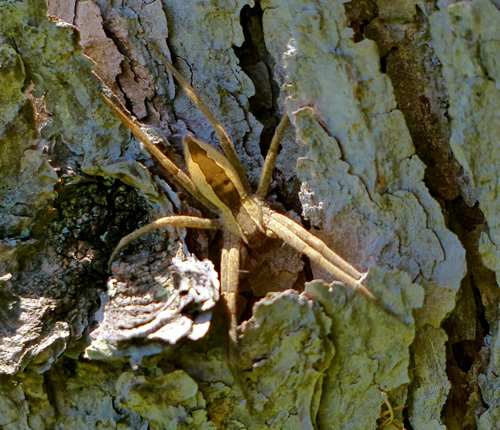
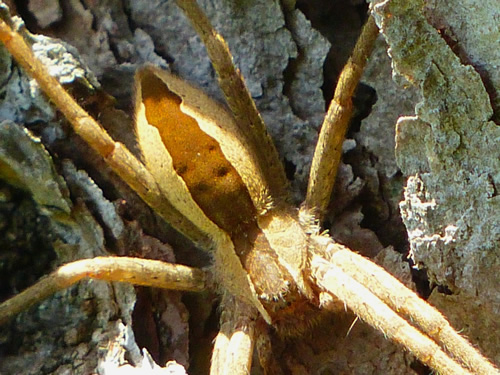
Observer: Paul Lauenstein
Observation Date: 5/11/20
Observation Time: 11:05 a.m.
Observation Location: in a small oak tree in the field across the street from the Gavins Pond soccer fields
Common Name: Oak gall
Scientific Name: caused by small wasps in the family Cynipidae
Comments: Oak apple or oak gall is the common name for a large, round, vaguely apple-like gall commonly found on many species of oak. Oak apples range in size from 2 to 4 centimetres (1 to 2 in) in diameter and are caused by chemicals injected by the larvae of certain kinds of gall wasp in the family Cynipidae. The adult female wasp lays single eggs in developing leaf buds. The wasp larvae feed on the gall tissue resulting from their secretions, which modify the oak bud into the gall, a structure that protects the developing larvae until they undergo metamorphosis into adults. Considerable confusion exists in the general “literature” between the oak apple and the oak marble gall. The oak marble is frequently called the oak apple due to the superficial resemblance and the preponderance of the oak marble gall in the wild. Other galls found on oak trees include the oak artichoke gall and the acorn cup gall, but each of these has its own distinctive form.
Some common oak-apple-forming species are the Biorhiza pallida gall wasp in Europe, Amphibolips confluenta in eastern North America,[2] and Atrusca bella in western North America.
More Information: Wikipedia
Observer: Paul Lauenstein
Observation Date: 5/16/20
Observation Time: 6:45 a.m.
Observation Location: near Gavins Pond
Common Name: Olive-sided flycatcher
Scientific Name: Contopus cooperi
Comments: I encountered this bird perched about 30 feet up in a leafless tree on the right side of the trail leading from the soccer fields to Gavins Pond dam, where the trail emerges from the woods and bends left toward the dam.
More Information: All About Birds
Observer: Richard Mandell
Observation Date: 10/12/10
Observation Time: dusk
Observation Location: Mountain St.
Common Name: Opossum
Scientific Name: Didelphimorphia
Comments: Opossums are voracious eaters that will try anything they find. Surprisingly, opossums eat ticks by the thousands. Ticks, particularly the black-legged ticks like deer ticks that are responsible for the spread of Lyme disease, appear to be a top item on the opossum’s menu. Several years ago, biologists put opossums and other species, like chipmunks, squirrels, mice, and catbirds to the test, giving each animal 100 ticks to eat. Opossums ate far more ticks than any other animal, leading scientists to estimate that just one opossum eats, on average, 5,000 ticks each year.
More Information: The National Opossum Society
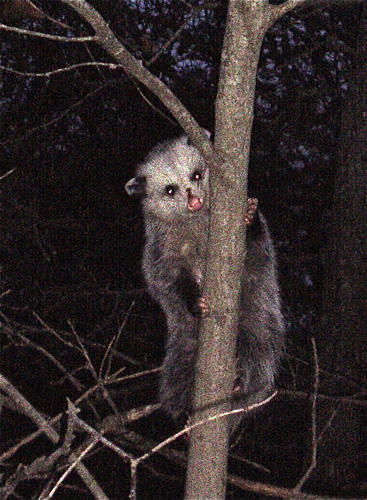
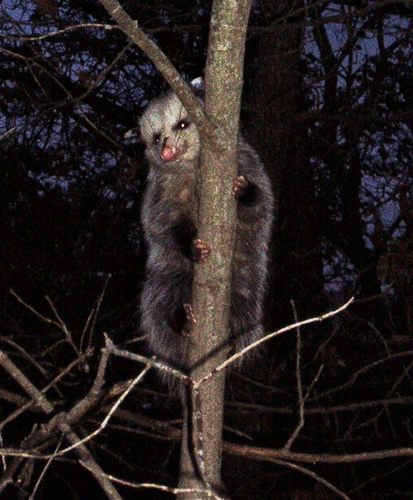
Observer: Paul Lauenstein
Observation Date: 6/19/13
Observation Time: 2:30 p.m.
Observation Location: Gavins Pond Dam
Common Name: Orange bluet damselfly
Scientific Name: Enallagma signatum
Comments: The orange bluet has a long flight season. It’s from early March to early November. This bluet is unusual in that it is most active in the late afternoon. It is often found near slow moving streams, ponds, and pools with still waters.
More Information: Wikipedia or Fotki
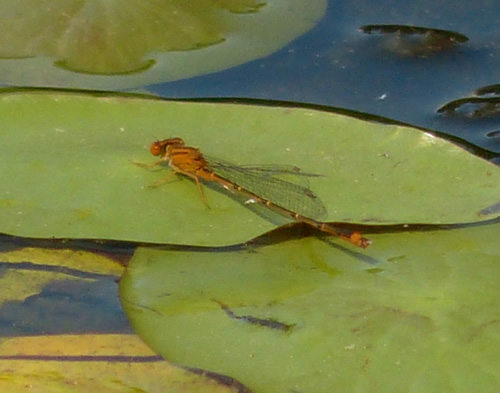
Observer: Paul Lauenstein
Observation Date: 7/1/11
Observation Time: 3:45 p.m.
Observation Location: Gavins Pond Dam
Common Name: Orange bluet damselfly
Scientific Name: Enallagma signatum
Comments: These small orange damselflies were darting about all over the surface of the pond, occasionally alighting on floating weeds. Some were mating.
The first two photos are males and the third female.
More Information: Wikipedia or Fotki
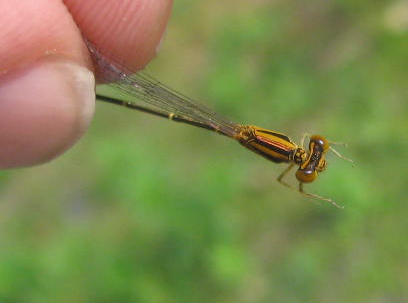
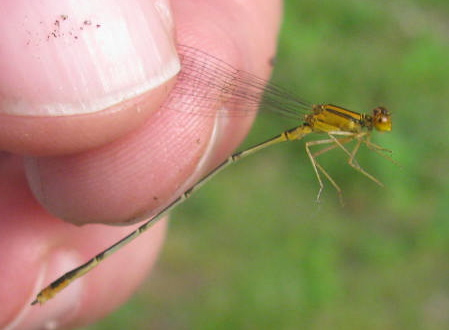
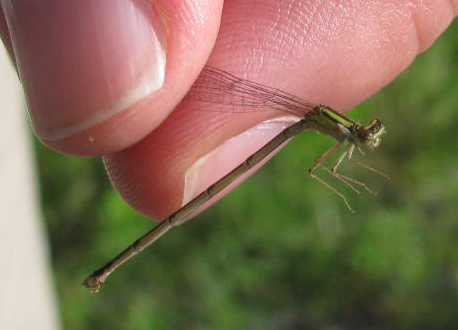
Observer: Paul Lauenstein
Observation Date: 6/12/15
Observation Time: 3:30 p.m.
Observation Location: conservation land near Lakeview & Morse Streets
Common Name: Orange Virbia Moth
Scientific Name: Virbia aurantiaca
Comments: Some are dusky and some have dots and bands, but all orange virbia moths are some shade of orange and have large, curious eyes, and like typical moths they have prominent antennae.
More Information: insectidentification.org
Observer: Paul Lauenstein
Observation Date: 6/1/14
Observation Time: 12:25 p.m.
Observation Location: 4 Gavins Pond Rd.
Common Name: Orchard Orbweaver
Scientific Name: Leucauge venusta
Comments: I had a hard time focusing the camera on this tiny spider.
More Information: Wikipedia
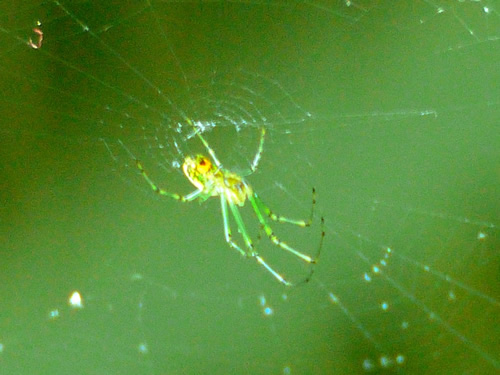
Observer: Paul Lauenstein
Observation Date: 5/27/19
Observation Time: 2:20 p.m.
Observation Location: Conservation land near Morse & Lakeview
Common Name: Orchard Orbweaver spider
Scientific Name: Leucauge venusta
Comments: I had a hard time focusing the camera on this tiny spider and its gossamer web.
More Information: Wikipedia
Observer: Michael Scutari Acciavatti
Observation Date: 12/6/2018
Observation Location: Prescott Pond, Lakwood Drive, Stoughton
Common Name: Osprey
Scientific Name: Pandion haliaetus
Comments: Ospreys can also be seen in Sharon. They are most commonly seen over a lake or pond, where they dive for fish.
More Information: Wikipedia
Observer: Paul Lauenstein
Observation Date: 5/23/21
Observation Time: 9:00 a.m.
Observation Location: tall cell tower by the composting area at the end of Farnham Road
Common Name: Osprey
Scientific Name: Pandion haliaetus
Comments: A pair of ospreys built a nest atop the tall cell tower by the composting area at the end of Farnham Road.
More Information: All About Birds
Observer: Paul Lauenstein
Observation Date: 5/12/16
Observation Time: 7:45 a.m.
Observation Location: Moose Hill Audubon Wildlife Center
Common Name: Ovenbird
Scientific Name: Seiurus aurocapilla
Comments: Ovenbirds are in the warbler family. Their insistent “teacher, teacher, teacher” call is one of the most commonly heard birdsongs in the woods around Sharon. They are called ovenbirds because their nests, which are built on the ground, resemble little ovens.
More Information: All About Birds
Observer: Paul Lauenstein
Observation Date: 5/13/19
Observation Time: 10:00 a.m.
Observation Location: Moose Hill Audubon Wildlife Sanctuary
Common Name: Ovenbird
Scientific Name: Seiurus aurocapilla
Comments: This is one of the most common birds in the woods at Moose Hill. Learn to recognize its song, an insistent, piercing ‘tea-Cher, tea-Cher, tea-CHER, Tea-CHER, TEA-CHER’, and you will be able to find them.
Ovenbirds are warblers. Their name comes from the mounded nest they build on the ground, which resembles an oven.
More Information: All About Birds
Observer: Josh Simons
Observation Date: 5/14/23
Observation Time: 12:30 p.m.
Observation Location: Moose Hill Parkway
Common Name: Ovenbird
Scientific Name: Seiurus aurocapilla
Comments: This is one of the most common birds in the woods at Moose Hill. Learn to recognize its song, an insistent, piercing ‘tea-Cher, tea-Cher, tea-CHER, Tea-CHER, TEA-CHER’, and you will be able to find them.
Ovenbirds are warblers. Their name comes from the mounded nest they build on the ground, which resembles an oven.
More Information: All About Birds
Observer: Paul Lauenstein
Observation Date: 5/15/23
Observation Time: 10:20 a.m.
Observation Location: Moose Hill Audubon Wildlife Sanctuary
Common Name: Ovenbird
Scientific Name: Seiurus aurocapilla
Comments: This is one of the most common birds in the woods at Moose Hill. Learn to recognize its song, an insistent, piercing ‘tea-Cher, tea-Cher, tea-CHER, Tea-CHER, TEA-CHER’, and you will be able to find them.
Ovenbirds are warblers. Their name comes from the mounded nest they build on the ground, which resembles an oven.
More Information: All About Birds
Observer: Paul Lauenstein
Observation Date: 5/16/14
Observation Time: 6:20 a.m.
Observation Location: Moose Hill Audubon Wildlife Sanctuary
Common Name: Ovenbird
Scientific Name: Seiurus aurocapilla
Comments: The ovenbird’s rapid-fire “teacher-teacher-teacher” song rings out in summer hardwood forests from the Mid-Atlantic states to northeastern British Columbia. It’s so loud that it may come as a surprise to find this inconspicuous warbler strutting like a tiny rooster across the dim forest floor. Its olive-brown back and spotted breast are excellent disguise as it gleans invertebrates from the leaf litter. Its nest, a leaf-covered dome resembling an old-fashioned outdoor oven, gives the ovenbird its name.
More Information: All About Birds.org
Observer: Paul Lauenstein
Observation Date: 5/23/16
Observation Time: 11:30 a.m.
Observation Location: Moose Hill Audubon Wildlife Center
Common Name: Ovenbird
Scientific Name: Seiurus aurocapilla
Comments: Ovenbirds are in the warbler family. Their insistent “teacher, teacher, teacher” call is one of the most commonly heard birdsongs in the woods around Sharon. They are called ovenbirds because their nests, which are built on the ground, resemble little ovens.
More Information: All About Birds
Observer: Paul Lauenstein
Observation Date: 5/30/15
Observation Time: 1:00 p.m.
Observation Location: woods beyond Everett Street
Common Name: Ovenbird
Scientific Name: Seiurus aurocapilla
Comments: Ovenbirds are in the warbler family. Their insistent “teacher, teacher, teacher” call is one of the most commonly heard birdsongs in the woods around Sharon. They are called ovenbirds because their nests, which are built on the ground, resemble little ovens.
More Information: All About Birds
Observer: Jason Platt
Observation Date: 5/8/18
Observation Time: 8:00 a.m.
Observation Location: Moose Hill Audubon Wildlife Sanctuary
Common Name: Ovenbird
Scientific Name: Seiurus aurocapilla
Comments: The ovenbird’s rapid-fire “teacher-teacher-teacher” song rings out in summer hardwood forests from the Mid-Atlantic states to northeastern British Columbia. It’s so loud that it may come as a surprise to find this inconspicuous warbler strutting like a tiny rooster across the dim forest floor. Its olive-brown back and spotted breast are excellent disguise as it gleans invertebrates from the leaf litter. Its nest, a leaf-covered dome resembling an old-fashioned outdoor oven, gives the ovenbird its name.
More Information: All About Birds.org
Observer: Paul Lauenstein
Observation Date: 5/8/19
Observation Time: 11:13 a.m.
Observation Location: Moose Hill Audubon Wildlife Sanctuary
Common Name: Ovenbird
Scientific Name: Seiurus aurocapilla
Comments: This is one of the most common birds in the woods at Moose Hill. Learn to recognize its song, an insistent and loud ‘tea-Cher, tea-Cher, tea-CHER, Tea-CHER, TEA-CHER’, and you will be able to find them.
More Information: All About Birds
Observer: Paul Lauenstein
Observation Date: 10/5/12
Observation Time: 3:55 p.m.
Observation Location: 4 Gavins Pond Road
Common Name: Painted Lady butterfly
Scientific Name: Vanessa cardui
Comments: The Painted Lady has four small spots on the undersides of its hind wings, whereas the American Lady has two large spots. Otherwise they look very similar.
More Information: Butterflies and Moths of North America
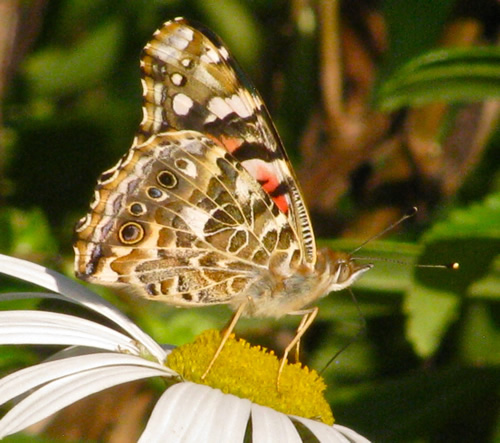
Observer: Paul Lauenstein
Observation Date: 5/5/12
Observation Time: 6:15 p.m.
Observation Location: Gavins Pond Road near Well #5
Common Name: Painted Lady butterfly
Scientific Name: Vanessa cardui
Comments: This Painted Lady butterfly was feeding in the same flowering shrub with American Lady butterflies. Learn how to tell them apart at: https://bugguide.net/node/view/236368
More Information: massaudubon.org
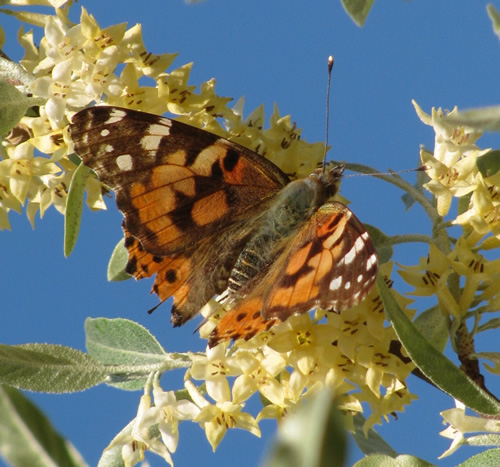
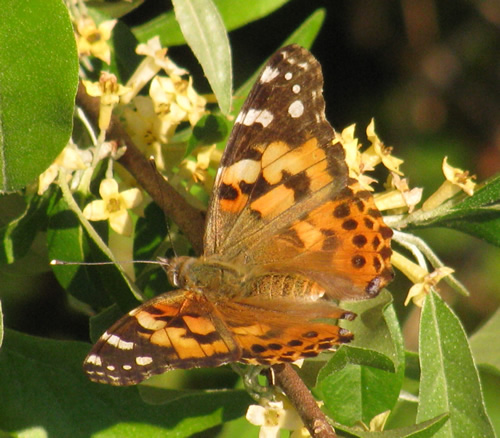
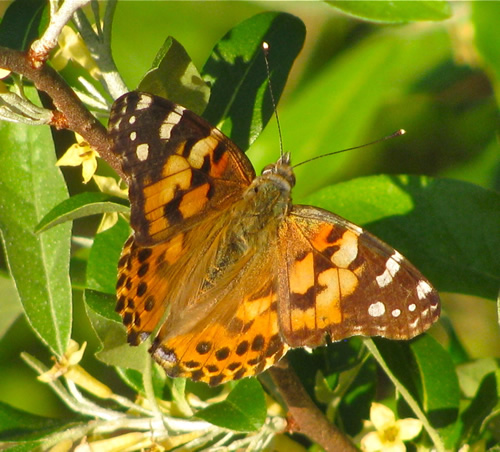
Observer: Paul Lauenstein
Observation Date: 7/1/19
Observation Time: 4:50 p.m.
Observation Location: Trustees of Reservations’ Moose Hill Farm
Common Name: Painted Lady butterfly
Scientific Name: Vanessa cardui
Comments: The Painted Lady has four small spots on the undersides of its hind wings, whereas the American Lady has two large spots. Otherwise they look very similar.
This one was feeding on milkweed blossoms.
More Information: Butterflies and Moths of North America
Observer: Paul Lauenstein
Observation Date: 5/21/19
Observation Time: 12:15 p.m.
Observation Location: 4 Gavins Pond Road
Common Name: Painted Skimmer dragonfly
Scientific Name: Libellula semifasciata
Comments: Painted Skimmers live up to their name, and the wings especially glow with color. A rich brown, the thorax has two whitish to yellow diagonal stripes on each side. The abdomen has yellow edges and a jagged black central stripe on the last few segments. The wings are marked with a brown streak at the base and brown spots at the middle and near the end. The veins along the front of each wing and at the base of the hindwings are largely yellow.
Painted Skimmer dragonflies are considered to be migratory. Some Painted Skimmers appear in spring in the northern states and extreme southern Canada before they would have emerged locally, presumably migrants. They have also been observed in autumn along the northeast coast in apparent directional flight.
More Information: Migratory Dragonfly Partnership
Observer: Paul Lauenstein
Observation Date: 5/27/19
Observation Time: 5:00 p.m.
Observation Location: on a bluff under high tension wires near S. Walpole St.
Common Name: Painted Skimmer dragonfly
Scientific Name: Libellula semifasciata
Comments: Painted Skimmers live up to their name, and the wings especially glow with color. A rich brown, the thorax has two whitish to yellow diagonal stripes on each side. The abdomen has yellow edges and a jagged black central stripe on the last few segments. The wings are marked with a brown streak at the base and brown spots at the middle and near the end. The veins along the front of each wing and at the base of the hindwings are largely yellow.
Painted Skimmer dragonflies are considered to be migratory. Some Painted Skimmers appear in spring in the northern states and extreme southern Canada before they would have emerged locally, presumably migrants. They have also been observed in autumn along the northeast coast in apparent directional flight.
More Information: Migratory Dragonfly Partnership
Observer: Josh Simons
Observation Date: 6/21/22
Observation Time: 11:50 a.m.
Observation Location: Moose Hill area
Common Name: Painted Skimmer dragonfly
Scientific Name: Libellula semifasciata
Comments: Painted Skimmers live up to their name, and the wings especially glow with color. A rich brown, the thorax has two whitish to yellow diagonal stripes on each side. The abdomen has yellow edges and a jagged black central stripe on the last few segments. The wings are marked with a brown streak at the base and brown spots at the middle and near the end. The veins along the front of each wing and at the base of the hindwings are largely yellow.
Painted Skimmer dragonflies are considered to be migratory. Some Painted Skimmers appear in spring in the northern states and extreme southern Canada before they would have emerged locally, presumably migrants. They have also been observed in autumn along the northeast coast in apparent directional flight.
More Information: Migratory Dragonfly Partnership
Observer: Paul Lauenstein
Observation Date: 6/9/13
Observation Time: 3:10 p.m.
Observation Location: Gavins Pond area
Common Name: Painted Skimmer dragonfly
Scientific Name: Libellula semifasciata
Comments: This dragonfly is said to be uncommon, although it is not listed as such in Massachusetts.
More Information: iNaturalist
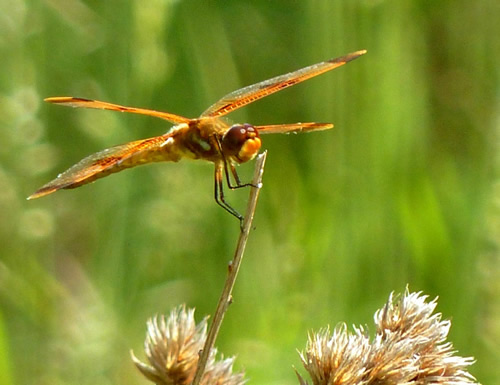
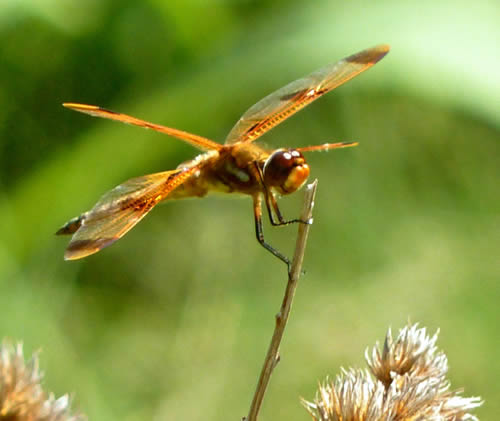
Observer: Paul Lauenstein
Observation Date: 6/9/12
Observation Time: 3:15 p.m.
Observation Location: Gavins Pond area
Common Name: Painted Skimmer dragonfly (female)
Scientific Name: Libellula semifasciata
Comments: This dragonfly is said to be uncommon, although it is not listed as such in Massachusetts. A map showing Painted Skimmer sightings can be viewed at: https://www.inaturalist.org/taxa/104585-Libellula-semifasciata
More Information: Walter Sanford’s Photoblog
Painted Skimmer ovipositing: https://www.youtube.com/watch?v=5_XyMkvXtfI
Observer: Paul Lauenstein
Observation Date: 7/25/10
Observation Time: 10:40 a.m.
Observation Location: Gavins Pond Dam
Common Name: Painted Turtle
Scientific Name: Chrysemys picta
Comments: Painted turtles mostly stay in the water, or climb out to sun themselves on logs. This one was walking around on Gavins Pond Dam.
More Information: Warner Nature Center
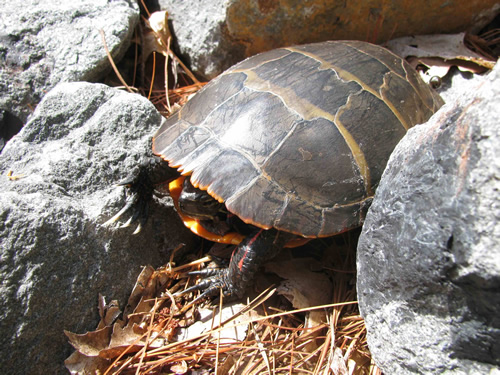
Observer: Paul Lauenstein
Observation Date: 7/6/11
Observation Time: 4:50 p.m.
Observation Location: Gavins Pond outflow pool
Common Name: Painted Turtle
Scientific Name: Chrysemys picta
Comments: I found this specimen on the dam, so I photographed it and then put it back in the water. In June, painted turtles lay their eggs in holes they dig with their hind legs in sunny patches of sandy soil.
More Information: Wikipedia
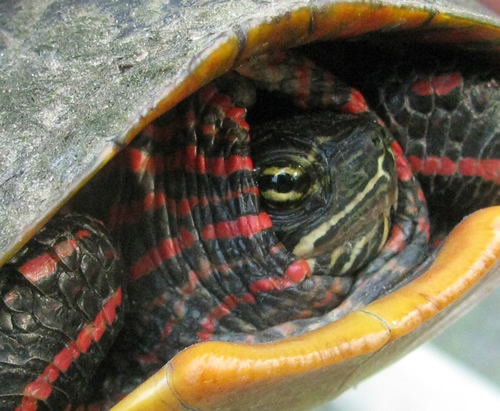
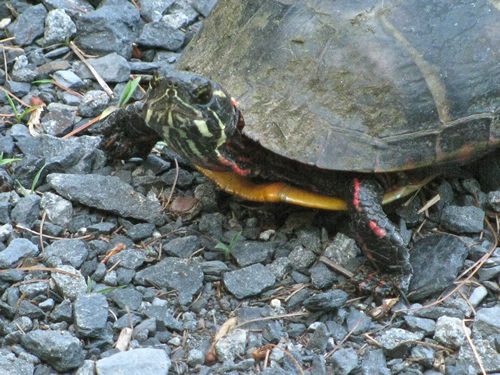
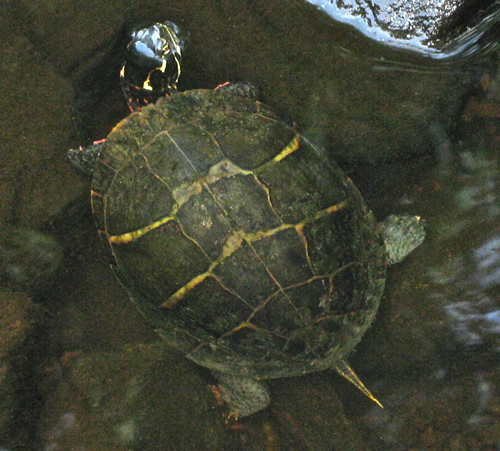
Observer: Paul Lauenstein
Observation Date: 5/3/20
Observation Time: 10:45 a.m.
Observation Location: Gavins Pond
Common Name: Painted Turtle
Scientific Name: Chrysemys picta
Comments: Turtles are cold-blooded. These painted turtles were sunning themselves on a log to escape the chilly water. In June, painted turtles lay their eggs in holes they dig with their hind legs in sunny patches of sandy soil.
More Information: Wikipedia
Observer: Paul Lauenstein
Observation Date: 5/3/20
Observation Time: 6:51 a.m.
Observation Location: Moose Hill Audubon Wildlife Sanctuary (Billings Loop)
Common Name: Palm Warbler
Scientific Name: Setophaga palmarum
Comments: Palm warblers pass through Sharon in late April and early May on their northward migration. They sometimes mingle with other species of warblers.
You can monitor the bird migration in spring by keeping an eye on the live radar map at: http://birdcast.info/live-migration-maps/
More Information: All About Birds
Observer: Paul Lauenstein
Observation Date: 5/3/20
Observation Time: 10:00 a.m.
Observation Location: pine woods by Gavins Pond
Common Name: Palm Warbler
Scientific Name: Setophaga palmarum
Comments: Palm warblers pass through Sharon in late April and early May on their northward migration. They sometimes mingle with other species of warblers. This one was in the company of a yellow-rumped warbler and a black-and-white warbler.
You can monitor the bird migration in spring by keeping an eye on the live radar map at: http://birdcast.info/live-migration-maps/
More Information: All About Birds
Observer: Paul Lauenstein
Observation Date: 5/7/23
Observation Time: 8:00 a.m.
Observation Location: Moose Hill Audubon Wildlife Sanctuary
Common Name: Palm Warbler
Scientific Name: Setophaga palmarum
Comments: Palm warblers pass through Sharon in late April and early May on their northward migration. They sometimes mingle with other species of warblers. This one was in the company of a northern parula warbler and a black-and-white warbler.
You can monitor the bird migration in spring by keeping an eye on the live radar map at: http://birdcast.info/live-migration-maps/
An app called Merlin is very helpful for finding out what species of birds are singing nearby.
More Information: All About Birds
Observer: Paul Lauenstein
Observation Date: 5/9/23
Observation Time: 8:00 a.m.
Observation Location: Moose Hill Audubon Wildlife Sanctuary
Common Name: Palm Warbler
Scientific Name: Setophaga palmarum
Comments: Palm warblers pass through Sharon in late April and early May on their northward migration. May 9 is near the end of the time during which palm warblers can be seen in Sharon.
You can monitor the bird migration in spring by keeping an eye on the live radar map at: http://birdcast.info/live-migration-maps/
More Information: All About Birds
Observer: Paul Lauenstein
Observation Date: 7/13/11
Observation Time: 2:00 p.m.
Observation Location: Gavins Pond soccer field parking lot
Common Name: Pearl Crescent butterflies
Scientific Name: Phyciodes tharos
Comments: Here is a sequence of four photos, taken over a span of just a few minutes, of a pair of Pearl Crescent butterflies mating near the Gavins Pond soccer field parking lot.
I was walking on my way to get the stream gauge reading at the Gavins Pond dam when I first spotted them flying erratically. The smaller male was pursuing the bigger female. When they alit, I got out my camera, approached quietly, and started shooting.
More Information: Wikipedia
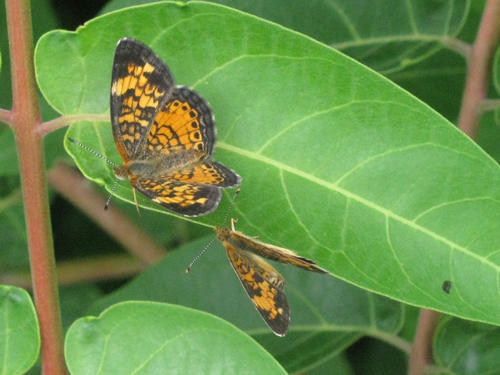
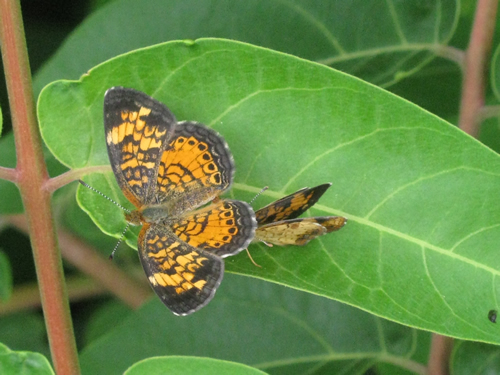
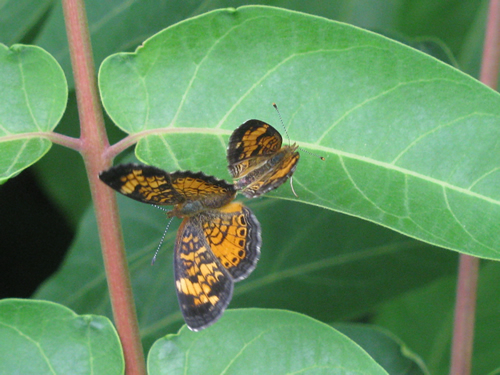
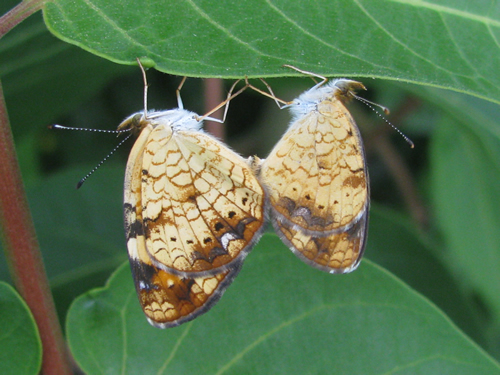
Observer: Paul Lauenstein
Observation Date: 5/19/20
Observation Time: 10:20 a.m.
Observation Location: under high tension lines near Gavins Pond
Common Name: Pearl Crescent butterfly
Scientific Name: Phyciodes tharos
Comments: Adults find nectar from a great variety of flowers including dogbane, swamp milkweed, shepherd’s needle, asters, and winter cress. Males patrol open areas for females. The eggs are laid in small batches on the underside of host plant leaves. Caterpillars eat the leaves and are gregarious when young. Hibernation is by third-stage caterpillars.
More Information: Butterflies and Moths of North America
Observer: Paul Lauenstein
Observation Date: 5/21/14
Observation Time: 1:50 p.m.
Observation Location: Gavins Pond Dam
Common Name: Pearl Crescent butterfly
Scientific Name: Phyciodes tharos
Comments: Adults find nectar from a great variety of flowers including dogbane, swamp milkweed, shepherd’s needle, asters, and winter cress. Males patrol open areas for females. The eggs are laid in small batches on the underside of host plant leaves. Caterpillars eat the leaves and are gregarious when young. Hibernation is by third-stage caterpillars.
More Information: Butterflies and Moths of North America
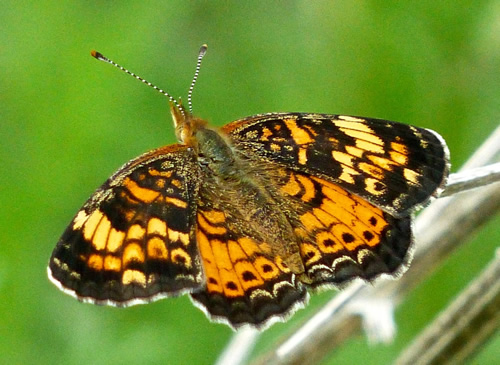
Observer: Paul Lauenstein
Observation Date: 5/30/10
Observation Time: 4:00 p.m.
Observation Location: Moose Hill Audubon Wildlife Sanctuary
Common Name: Pearl Crescent butterfly
Scientific Name: Phyciodes tharos
Comments: The pearl crescent (Phyciodes tharos) is a butterfly of North America. It is found in all parts of the United States except the west coast, and throughout Mexico and parts of southern Canada, in particular Ontario. Its habitat is open areas such as pastures, road edges, vacant lots, fields, open pine woods. Its pattern is quite variable. Males usually have black antenna knobs.
More Information: Butterflies and Moths of North America
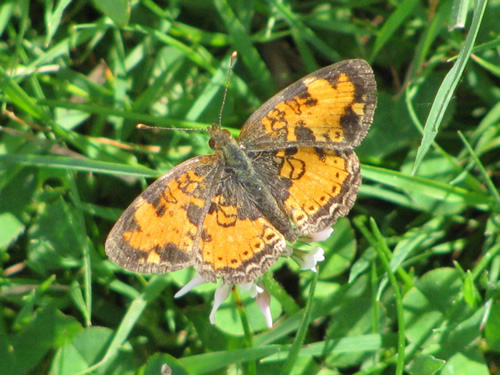
Observer: Paul Lauenstein
Observation Date: 7/25/10
Observation Time: 10:30 a.m.
Observation Location: Gavins Pond
Common Name: Peck’s Skipper butterfly
Scientific Name: Polites peckius
Comments: Flies from June through early August on flowers, at roadsides, wet meadows, and in gardens. See: https://en.wikipedia.org/wiki/Polites_peckius
More Information: Butterflies and Moths of North America
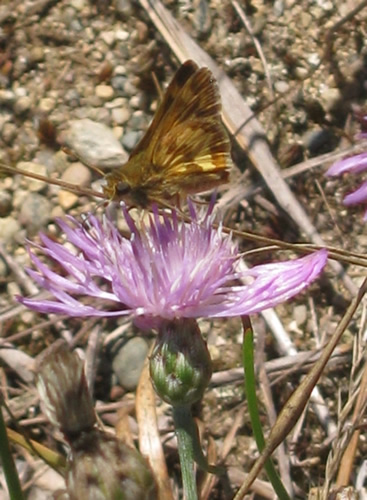
Observer: Colin Barbera
Observation Date: 12/11/21
Observation Time: afternoon
Observation Location: Tolman St.
Common Name: Peregrine falcon
Scientific Name: Falco peregrinus
Comments: “Powerful and fast-flying, the Peregrine Falcon hunts medium-sized birds, dropping down on them from high above in a spectacular stoop. They were virtually eradicated from eastern North America by pesticide poisoning in the middle 20th century. After significant recovery efforts, Peregrine Falcons have made an incredible rebound and are now regularly seen in many large cities and coastal areas.”
– from: All About Birds
(Thank you, Rachel Carson, for ending the use of DDT!)
More Information: All About Birds and Audubon
Observer: Paul Lauenstein
Observation Date: 5/14/14
Observation Time: 2:00 p.m.
Observation Location: Moose Hill Audubon Wildlife Sanctuary
Common Name: Phoebe
Scientific Name: Sayornis phoebe
Comments: The song of the Phoebe sounds like its name. You can find and play bird songs online. The more bird calls you memorize, the more bird species you will be able to identify in the field, where the birds themselves are often concealed by foliage.
More Information: All About Birds
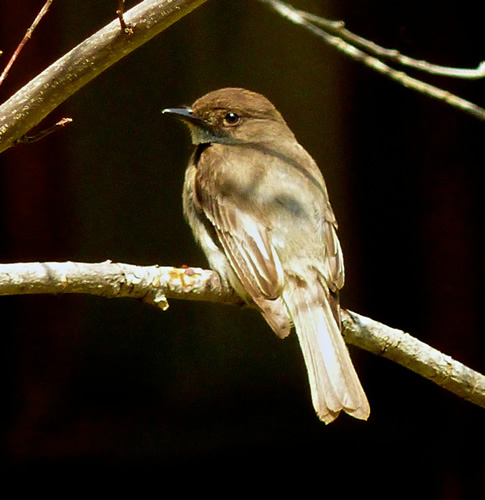
Observer: Jason Platt
Observation Date: 5/8/18
Observation Time: 8:15 a.m.
Observation Location: Moose Hill Audubon Wildlife Sanctuary
Common Name: Phoebe
Scientific Name: Sayornis phoebe
Comments: One of our most familiar eastern flycatchers, the Eastern Phoebe’s raspy “phoebe” call is a frequent sound around yards and farms in spring and summer.
More Information: All About Birds.org
Observer: Paul Lauenstein
Observation Date: 5/8/23
Observation Time: 11:00 a.m.
Observation Location: Moose Hill Audubon Wildlife Sanctuary
Common Name: Phoebe
Scientific Name: Sayornis phoebe
Comments: Phoebes are members of the flycatcher family. The song of the Phoebe sounds like its name. You can find and play bird songs online. The more bird calls you memorize, the more bird species you will be able to identify in the field, where the birds themselves are often concealed by foliage.
More Information: All About Birds
Observer: Paul Lauenstein
Observation Date: 8/1/10
Observation Time: 7:50 p.m.
Observation Location: Gavins Pond Road soccer field
Common Name: Phoebe
Scientific Name: Sayornis phoebe
Comments: Phoebes are flycatchers.
More Information: All About Birds

Observer: Paul Lauenstein
Observation Date: 8/11/11
Observation Time: 3:50 p.m.
Observation Location: Gavins Pond Dam
Common Name: Pickerel Frog
Scientific Name: Rana palustris
Comments: The skin secretions of a stressed pickerel frog are known to be toxic to other frogs, as many a novice frog catcher has found when he finds only the pickerel frogs still alive in his bucket. These secretions can also be moderately irritating if they come in contact with the eyes, mucous membranes, or broken skin. It is advisable to wash one’s hands after handling pickerel frogs.
Pickerel frogs look a lot like leopard frogs. Here’s where you can learn how to tell the difference: https://discovery.acadiau.ca/herpatlas/photopages/compleopick.htm
More Information: Wikipedia
Observer: Paul Lauenstein
Observation Date: 8/20/10
Observation Time: 7:45 a.m.
Observation Location: Gavins Pond Dam
Common Name: Pickerel Frog
Scientific Name: Rana palustris
Comments: The skin secretions of a stressed pickerel frog are known to be toxic to other frogs, as many a novice frog catcher has found when he finds only the pickerel frogs still alive in his bucket. These secretions can also be moderately irritating if they come in contact with the eyes, mucous membranes, or broken skin. It is advisable to wash one’s hands after handling pickerel frogs.
More Information: Wikipedia
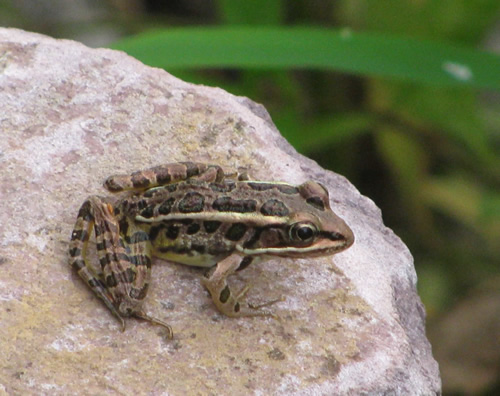
Observer: Josh Simons
Observation Date: 9/9/20
Observation Time: 11:15 a.m.
Observation Location: Moose Hill area
Common Name: Pickerel Frog
Scientific Name: Lithobates palustris
Comments: The skin secretions of a stressed pickerel frog are known to be toxic to other frogs, as many a novice frog catcher has found when he finds only the pickerel frogs still alive in his bucket. These secretions can also be moderately irritating if they come in contact with the eyes, mucous membranes, or broken skin. It is advisable to wash one’s hands after handling pickerel frogs.
Pickerel frogs look a lot like leopard frogs. Here’s where you can learn how to tell the difference: https://discovery.acadiau.ca/herpatlas/photopages/compleopick.htm
More Information: Wikipedia
Observer: Faith Berkland
Observation Date: 10/24/20
Observation Time: 3:55 p.m.
Observation Location: 302-296 Mansfield St., Sharon
Common Name: Pileated Woodpecker
Scientific Name: Dryocopus pileatus
Comments: Unfortunately I did not get a picture. However, this was very recognizable for the loud call, the large white spot under its wings when it flew from tree to tree and its pointy crest. I only briefly made out the coloring of its crest but unmistakable nonetheless. Much larger than the other woodpeckers in the area, flickers, red bellies, downy, hairy etc.
More Information: Audubon Guide to N. American Birds
Observer: Paul Lauenstein
Observation Date: 2/25/20
Observation Time: 1:10 p.m.
Observation Location: Moose Hill Audubon Wildlife Sanctuary
Common Name: Pileated Woodpecker
Scientific Name: Dryocopus pileatus
Comments: I spotted this magnificent, large, red-crested woodpecker behind the barn on the Billings Loop. You will improve your chances of sighting one of these birds by learning their calls and the sound of their drumming, which is different from that of other smaller woodpeckers.
More Information: Audubon Guide to N. American Birds
Observer: Paul Lauenstein
Observation Date: 4/21/24
Observation Time: 9:00 a.m.
Observation Location: Moose Hill Audubon Wildlife Sanctuary
Common Name: Pileated Woodpecker
Scientific Name: Dryocopus pileatus
Comments: You will improve your chances of sighting one of these magnificent birds by learning their calls and the sound of their drumming, which is different from that of other smaller woodpeckers.
More Information: Audubon Guide to N. American Birds
Observer: Paul Lauenstein
Observation Date: 4/27/18
Observation Time: 9:00 a.m.
Observation Location: Moose Hill Audubon Wildlife Sanctuary
Common Name: Pileated Woodpecker
Scientific Name: Dryocopus pileatus
Comments: This large woodpecker (about the size of a crow) was peeling bark off a tree to get at the bugs underneath. Its tongue is visible in the last photo below.
More Information: All About Birds
Observer: Paul Lauenstein
Observation Date: 5/11/19
Observation Time: 8:00 a.m.
Observation Location: Moose Hill Audubon Wildlife Sanctuary
Common Name: Pileated Woodpecker
Scientific Name: Dryocopus pileatus
Comments: I found this bird by following the sound of its hammering. It was in the exact same location as it was on May 7, 2019. Shortly after I took this photo, I saw it mate with another pileated woodpecker.
More Information: Audubon Guide to N. American Birds
Observer: Paul Lauenstein
Observation Date: 5/17/23
Observation Time: 8:45 a.m.
Observation Location: Moose Hill Audubon Wildlife Sanctuary
Common Name: Pileated Woodpecker
Scientific Name: Dryocopus pileatus
Comments: I heard this magnificent, large, red-crested woodpecker before I saw it near a dead tree where it had hollowed out a nesting cavity. I watched and photographed it as it made its way to the nest, went in, and then re-emerged.
You will improve your chances of sighting one of these birds by learning their calls and the sound of their drumming, which is different from that of other smaller woodpeckers.
More Information: Audubon Guide to N. American Birds
Observer: Paul Lauenstein
Observation Date: 5/7/19
Observation Time: 7:00 a.m.
Observation Location: Moose Hill Audubon Wildlife Sanctuary
Common Name: Pileated Woodpecker
Scientific Name: Dryocopus pileatus
Comments: This magnificent crow-sized bird was the inspiration for the cartoon character Woody Woodpecker. Unfortunately, its cousin, the ivory-billed woodpecker, has gone extinct.
More Information: Audubon Guide to N. American Birds
Observer: Deb Radovsky
Observation Date: 5/9/23
Observation Time: 8:00 a.m.
Observation Location: Moose Hill Audubon Wildlife Sanctuary
Common Name: Pileated Woodpecker
Scientific Name: Dryocopus pileatus
Comments: You will improve your chances of sighting one of these magnificent birds by learning their calls and the sound of their drumming, which is different from that of other smaller woodpeckers.
You can use a cell phone app called Merlin to detect and identify nearby birds. It’s a great way to learn bird songs.
More Information: Audubon Guide to N. American Birds
Observer: Will Sweet
Observation Date: 1/11/09
Observation Time: 10:00 a.m.
Observation Location: Backyard bird feeder
Common Name: Pine Siskin
Scientific Name: Carduelis pinus
Comments: There was a flock of 43 Pine Siskins on my thistle feeders.
More Information: Cornell Lab of Ornithology “All About Birds”
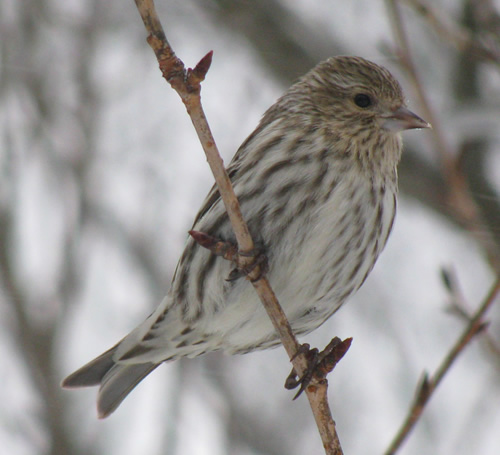
Observer: Deb Radovsky
Observation Date: 12/15/18
Observation Time: morning
Observation Location: Moose Hill Audubon Wildlife Sanctuary (near feeders)
Common Name: Pine Siskin
Scientific Name: Spinus pinus
Comments: Every couple of years, Pine Siskins make unpredictable movements called irruptions into southern and eastern North America. Though they’re erratic, these movements may not be entirely random. Banding data suggest that some birds may fly west-east across the continent while others move north-south.
More Information: All About Birds
Observer: Paul Lauenstein
Observation Date: 5/11/23
Observation Time: 9:55 a.m.
Observation Location: Moose Hill Audubon Wildlife Sanctuary (near Billings Loop barn)
Common Name: Pine Siskin
Scientific Name: Spinus pinus
Comments: Every couple of years, Pine Siskins make unpredictable movements called irruptions into southern and eastern North America. Though they’re erratic, these movements may not be entirely random. Banding data suggest that some birds may fly west-east across the continent while others move north-south.
Pine siskins are typically found in Sharon in winter. This pair was late heading north for summer.
More Information: All About Birds
Observer: Josh Simons
Observation Date: 12/30/20
Observation Time: 1:30 p.m.
Observation Location: Moose Hill area
Common Name: Pine Warbler
Scientific Name: Setophaga pinus
Comments: Pine warblers are typically found in pine groves. Many warbler species migrate through Sharon in May on their way to nesting areas farther north, but pine warblers nest here in Sharon, and can be found here all summer. Although they typically migrate south in winter, some of them stick around in Massachusetts through the winter.
More Information: Mass Audubon
Observer: Paul Lauenstein
Observation Date: 4/25/23
Observation Time: 8:30 a.m.
Observation Location: Moose Hill Audubon Wildlife Sanctuary
Common Name: Pine Warbler
Scientific Name: Setophaga pinus
Comments: Pine warblers are typically found in pine groves. Many warbler species migrate through Sharon in May on their way to nesting areas farther north, but pine warblers nest here in Sharon, and can be found here all summer. Although they typically migrate south in winter, some of them stick around in Massachusetts through the winter.
The trilling call of the pine warbler can be hard to distinguish from that of a chipping sparrow.
More Information: Mass Audubon
Observer: Paul Lauenstein
Observation Date: 5/2/20
Observation Time: 1:00 p.m.
Observation Location: 4 Gavins Pond Road (my back yard)
Common Name: Pine Warbler
Scientific Name: Setophaga pinus
Comments: Pine warblers are typically found in pine groves. Many warbler species migrate through Sharon in May on their way to nesting areas farther north, but pine warblers nest here in Sharon, and can be found here all summer.
More Information: All About Birds
Observer: Paul Lauenstein
Observation Date: May 24, 2015
Observation Time: 5:20 p.m.
Observation Location: along Beaver Brook near the train station
Common Name: Pine Warbler
Scientific Name: Setophaga pinus
Comments: Notice that this pine warbler is in a pine tree. Many warbler species migrate through Sharon in May on their way to nesting areas farther north, but pine warblers nest here in Sharon, and can be found in summer.
More Information: All About Birds
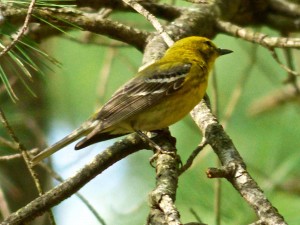
Observer: Paul Lauenstein
Observation Date: May 27, 2019
Observation Time: 1:55 p.m.
Observation Location: Conservation land near Morse & Lakeview
Common Name: Pine Warbler
Scientific Name: Setophaga pinus
Comments: Pine warblers nest here in Sharon, and can be found in pine woods in summer. The song of the pine warbler is hard to distinguish from the song of the chipping sparrow – unless you are a pine warbler!
More Information: All About Birds

